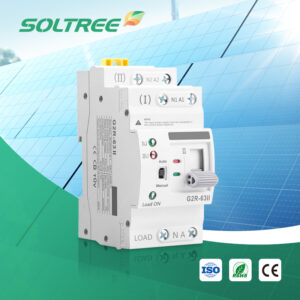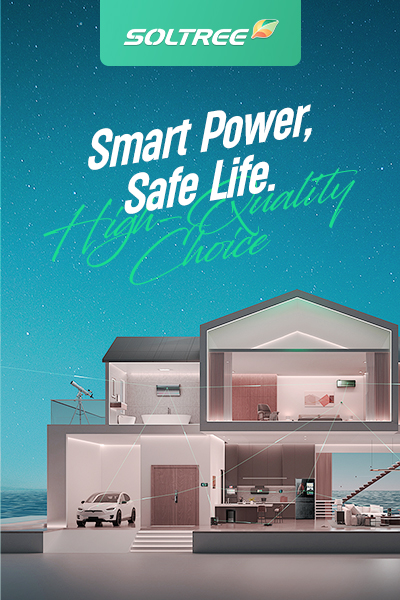Power interruptions that happen without warning cause tension and danger. A lot of people acquire the improper automated transfer switch (ATS) because they don’t know what type or size they need. This means that money is wasted, or worse, settings that are not safe. What is the answer? A simple, five-minute strategy to picking the best ATS with confidence.
1. The First Step: Choosing the Right ATS Type for Your Needs

Choosing the wrong type of ATS can make your system less secure. People who are buying typically don’t realize how changing the style can impair power continuity. You can keep things running smoothly and keep critical equipment safe by mastering the three primary categories.
1.1 Main Functions: Open, Closed, and Delayed Transition
Choosing transition modes without knowing what they are might cause downtime or stress on equipment. A lot of people think that all ATS units switch the same way, but functionality is important. Here’s the breakdown:
- Open Transition (Break-Before-Make): This is the most common form. It momentarily disconnects from one source and then connects to the other, leaving a power gap of 0.1 to 0.5 seconds. Most home and business uses are fine with minor disruptions.
- Closed Transition (Make-Before-Break): This model connects the two sources so that there is no power loss. Very important for hospitals, data centers, and factories, where even a few milliseconds of delay could cost money or put people in danger.
- Delayed Transition: This adds a gap between disconnecting and reconnecting power. This stops voltage spikes when big motors, like those in HVAC systems, start up again. Great for places with heavy machinery that can’t handle surges.
1.2 Specialized Applications: The Benefit of Bypass/Isolation ATS
Facilities are typically paralyzed when ATS maintenance needs to be done. Standard ATS designs make it necessary to shut down, which costs time and money. What is the answer? ATS for bypassing or isolating
This sophisticated architecture lets technicians work on repairs or maintenance without having to use the ATS at all. They may maintain the facility powered on only one source. It’s essential for operations that can’t afford any downtime, like hospitals, airlines, or banks.
2. The Second Step: Calculating Amperage—The Core of ATS Selection
Small ATS units quickly get overloaded, while large ones squander money. A lot of people make the error of sizing ATS based on the generator’s rating instead of the load. The “Load-Side First” idea is the most important thing.
2.1 The Main Idea: Knowing What “Load-Side First” Means
Mistakes in sizing can damage equipment or cause problems with regulations. Too many times, consumers look at the generator’s output instead of the actual load requirement. It’s easy to get the right answer:
ATS Amperage must be greater than or equal to the total connected load (in amps) or the main electrical panel rating.
👉 In short, your ATS should be able to handle the load it serves, not simply the generator. It’s like buying shoes: you buy for the person’s foot, not the box.
2.2 Quick Amperage Match: For Home and Business Use
A lot of homeowners and business owners still don’t know what to do after understanding the method. Let’s make it useful by giving examples:
For homes:
- Connect the ATS to your main electrical panel.
- A 200A panel needs a 200A ATS, for example.
- It’s easy and clear—don’t think about it too much.
Business:
- Needs exact estimations of the load.
- Think about the current loads and how they will grow in the future.
- For dependability, always provide a safety buffer.
- Some common commercial loads are: Systems for lighting, Units for HVAC, Tools and machinery and Electronics for the office.
This method makes sure that your ATS evolves with your building, not against it.
3. The Third Step: 5 Critical Parameters & Brand Considerations
Even after choosing the type and amperage, many people forget important information. Failures can still happen if the technical specs are wrong or the brands are bad. Let’s go over the five things that will help you choose the best ATS.
3.1 Voltage, Phase, and Poles: Understanding Your Electrical System
If ATS and electrical systems don’t match, they can break or be dangerous. People who buy things generally don’t pay attention to phase or pole numbers until the installation fails. Don’t take that chance:
- Voltage: 120/240V, 208V, and 480V are common ratings. Make sure your ATS fits your panel.
- Phase:
1. Single-phase is for households and small offices
2. Three-phase means businesses and factories.
- Poles:
1. Single-phase systems use 2-pole ATS.
2. 3- or 4-pole ATS = three-phase systems, and 4-pole ATS lets you switch between neutral and live wires for safety.
3.2 NEMA Rating and Suitability for the Environment
If you choose the wrong enclosure, your ATS could get dust, moisture, or rust. NEMA ratings take the guessing out of protection levels.
NEMA Ratings That Are Common:
- NEMA 1: For general usage inside.
- NEMA 3R: waterproof and good for homes or light businesses outside.
- NEMA 4/4X: Strong enough to withstand harsh outside conditions and resistant to water, dust, and rust.
- NEMA 12: For usage indoors in factories, it can handle dust and dripping water.
Not just the equipment, but also the atmosphere should meet the rating.
3.3 Smart Features, Communication, and Help After the Sale
Old ATS units don’t have contemporary monitoring functions. Without insights, operators run the danger of silent failures. This is what today’s sophisticated ATS models do:
- Smart features include LCD screens, automatic diagnostics, and event logging.
- Connectivity: Ports for communication, such as Modbus, let building management systems work together.
- After-Sales Support: Well-known manufacturers offer warranty coverage, replacement parts, and technical help, which is important for long-term peace of mind.
Conclusion
The right ATS keeps things running smoothly, protects equipment, and makes sure you’re following the rules. Keep in mind the main idea: Type → Amperage → Settings. Before you buy anything, talk to a certified electrician to be sure it’s safe. The appropriate ATS is more than simply equipment; it’s the lifeline of your business.



